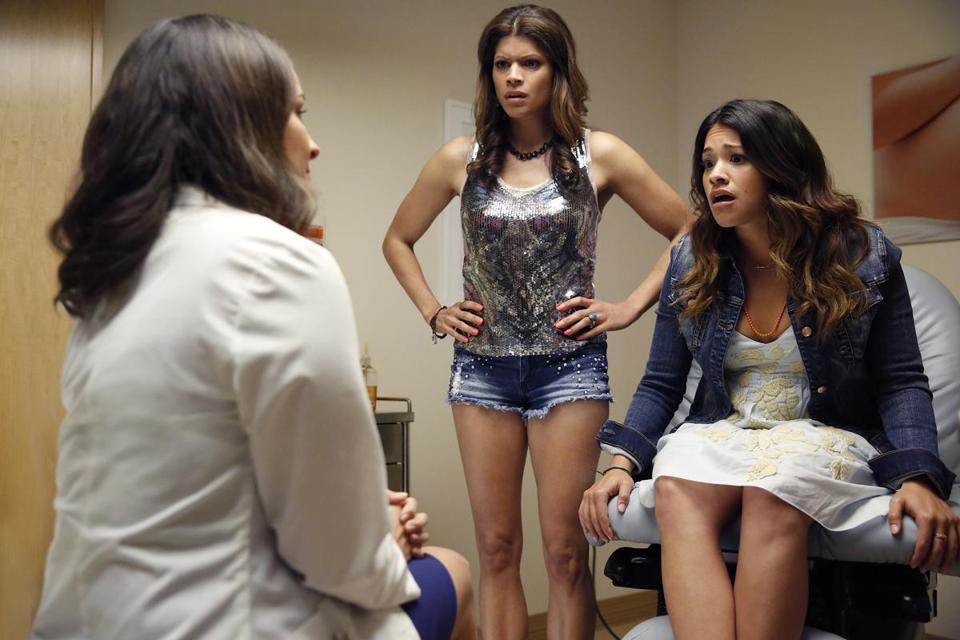If you want more women in TV, you gotta start at the top.
That’s the main conclusion reached by a new study looking at the employment figures of who writes, produces and appears on television. Having at least one woman creator or EP correlated with a higher percentage of major female characters, as well as “substantially” more women writers, directors and editors compared to similar programs with no female creatives among the executive ranks.
Broadcast programs with at least one female creator, for instance, had an average of 50% women writers. On programs with no female creator, that number plummeted down to 15%.
The 18th iteration of the “Boxed In” study out of San Diego State University’s Center for the Study of Women in Television and Film crunched the numbers for 2014–2015. It found that girls and women made up 42% of all speaking characters on broadcast programs, while female professionals comprised 27% of broadcast and 25% of cable creators, executive producers, producers, directors, writers, editors, and directors of photography working on prime-time programs. (For comparison’s sake, only 30% of all speaking characters in film last year were female, while women made up 17% of those same behind-the-scene roles.)
But lead researcher Dr. Martha Lauzen is wary of celebrating just yet. Female progress has stalled on the small screen, she notes: “There is a perception gap between how people think women are faring in television, both on screen and behind the scenes, and their actual employment. We are no longer experiencing the incremental growth we saw in the late 1990s and 2000s.”
The “Boxed In” study examined one randomly selected episode of every series. The report notes that random selection is a frequently used and widely accepted method of sampling episodes from the population of episodes in a season.
Here are some other findings from the study:
— Who appears on screen: In 2014–15, female characters comprised 42% of all speaking characters on broadcast television programs and 40% of all characters on broadcast, cable (A&E, AMC, FX, History, TNT, USA, HBO, Showtime), and Netflix programs. (In cable, the numbers are slightly lower: 40% of all speaking characters and 40% of major characters.)
— Who works off screen: Behind the scenes, women accounted for 27% of creators, directors, writers, producers, executive producers, editors, and directors of photography working on broadcast programs and 25% of those working in these key roles on broadcast, cable, and Netflix programs.
— More women in charge means more women on screen: On broadcast programs with no women executive producers, females accounted for 37% of major characters. On programs with at least one woman executive producer, females comprised 43% of major characters.
— More women in charge also means more writers off screen: On broadcast programs with no women executive producers, women accounted for 6% of writers. On programs with at least one woman executive producer, women comprised 32% of writers.
— The networks, ranked by gender: Programs airing on ABC featured the highest percentage of female characters (45%), followed by CW (43%), NBC and Fox (40%), and CBS (39%).
— Surprise! Ageism’s still a thing: Female characters continue to be portrayed as younger than their male counterparts. The majority of female characters were in their 20s and 30s (60%), whereas the majority of male characters were in their 30s and 40s (55%).
— The racial breakdown of women on screen: In broadcast, 77% of female characters were white, 15% were African-American, 3% were Latina, 4% were Asian, and 1% were of some other race or ethnicity. The numbers were comparable for cable. (Given Matt Damon’s now infamous dismissal of the importance of who gets to write, direct and produce, it’d certainly be helpful to know the racial breakdown of women working off screen, too.)
— Women continue to be underrepresented in the fictional workforce as well: Viewers were less likely to know the occupational status of female characters than male characters. 35% of female characters but only 24% of male characters had an unknown occupational status. (In cable, the numbers were 55% of male characters and 43% of female characters seen at work and working.)
— Where you’re most likely to find women behind the screens: On broadcast, women fared best as producers (38%), followed by writers (26%), executive producers (26%), creators (23%), editors (21%), directors (14%), and directors of photography (2%). Numbers were comparable for cable.
— The “boys only” clubhouse mentality is real: 45% of broadcast programs and 57% of cable programs employed 4 or fewer women in the roles considered. Only 4% of broadcast programs employed 4 or fewer men (5% in cable). 70% of the episodes considered had no female creators, 86% had no female directors, 70% had no female writers, 78% had no female editors, and 98% had no female directors of photography.
— Women creators hire women writers and directors. On broadcast programs with at least one woman creator, women accounted for 50% of writers. On programs with no women creators, women comprised 15% of writers. (The numbers are comparable for cable.) On broadcast programs with at least one woman creator, women accounted for 23% of directors (and 18% for cable shows). On broadcast and cable programs with no women creators, women comprised 10% of directors.
Given that only 18% of first-time T- director hires are women, according to a recent DGA study, it appears that conscious or unconscious gender discrimination on the small screen will continue until executives, creators and executive producers alike commit themselves to equalizing the playing field for the most democratic artistic medium that we have.
Read the full “Boxed In” report here.







